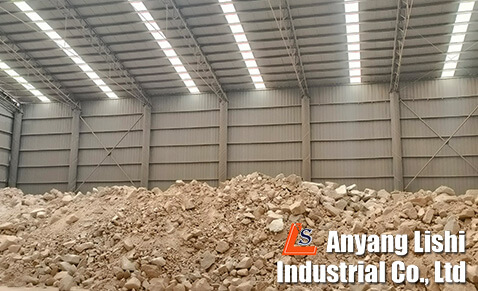
Feldspar, a diverse and widespread mineral group, plays a pivotal role in both geological formations and industrial applications. Understanding its main structural features is crucial for unraveling its significance in various contexts. This article delves into the primary structural characteristics of feldspar, shedding light on its intricate composition and the implications of these features.

Feldspar belongs to the tectosilicate mineral group, characterized by a three-dimensional framework of tetrahedra. The primary structural unit in feldspar is the silica tetrahedron, consisting of a central silicon atom bonded to four oxygen atoms in a tetrahedral arrangement. The connectivity of these tetrahedra creates a robust framework that defines feldspar’s structural integrity.
One of the distinguishing features of feldspar is its aluminosilicate composition. In addition to silica tetrahedra, aluminum tetrahedra are present within the structure. The incorporation of aluminum introduces charge imbalance, necessitating the substitution of aluminum for silicon in some tetrahedra to maintain electroneutrality. This structural adaptation contributes to feldspar’s ability to accommodate various elements, leading to the formation of different feldspar varieties.
Feldspar is commonly classified into two main groups based on the cations present in its structure: potassium feldspar (orthoclase) and plagioclase feldspar. Orthoclase, part of the potassium feldspar group, has a distinct structure where each silica tetrahedron is surrounded by eight oxygen atoms. The three-dimensional arrangement creates a network with potassium ions occupying the interstitial spaces, providing stability to the crystal lattice.
On the other hand, plagioclase feldspar, a significant component of many igneous rocks, displays a solid solution series between sodium feldspar (albite) and calcium feldspar (anorthite). This compositional variability imparts unique characteristics to plagioclase feldspar, with the end-members albite and anorthite representing the sodium-rich and calcium-rich extremes, respectively.
The twinning phenomenon is another noteworthy structural feature of feldspar. Carlsbad twinning, often observed in orthoclase, involves the penetration of one crystal by another, resulting in a distinctive intergrowth pattern. Albite twinning, prevalent in plagioclase feldspar, manifests as repeated, parallel stripes on crystal surfaces. These twinning patterns serve as diagnostic features for identifying different feldspar varieties.

Hydrothermal alteration can significantly impact feldspar’s structure. Weathering processes can lead to the leaching of alkali and alkaline earth ions, transforming feldspar into clay minerals. This alteration, known as kaolinization, results in the breakdown of feldspar’s intricate framework and the formation of kaolinite, a common clay mineral.
In terms of industrial applications, feldspar’s structural characteristics are exploited in the production of ceramics, glass, and other materials. The resistance of feldspar to chemical weathering and its ability to endure high temperatures make it an ideal raw material for the ceramics industry. The unique intergrowth patterns, as seen in twinning, also contribute to the aesthetic appeal of feldspar-bearing rocks used in architecture and decoration.
In conclusion, the structural features of feldspar are at the core of its geological significance and industrial utility. The intricate interplay of silica and aluminum tetrahedra, coupled with the diverse cation compositions and twinning phenomena, defines feldspar’s versatility. Whether shaping the landscapes through igneous rock formations or enhancing the functionality and aesthetics of industrial products, feldspar’s structural characteristics continue to captivate researchers and industry professionals alike.

Whether you have questions or you would just like to say hello,Contact us!
Call Anytime:
+86 15837207537Send E-mail:
info@lsakminerals.comAddress:
Anyang City , Henan Province, China.